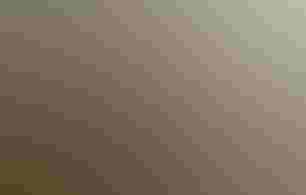
Here’s how to properly recognize Indigenous people and the land we’ve stewarded for millennia.
Maybe you’ve heard one before: at the start of an event, the speaker names the Indigenous groups that once or currently steward the land they’re standing on. This is a land acknowledgment. The growing practice, which spread to the United States from Canada, recognizes Indigenous people as the land’s ancestral caretakers and pays respect to modern native nations. Read aloud or shared in writing, a land acknowledgment also expresses a commitment to connecting with their descendants today.
Land acknowledgment is an exercise based in protocol for inter-tribal meetings. “Whenever we go to someone’s land, we recognize ourselves as visitors on their territory, exchange cultural practices, and welcome one another,” says Allan Vicaire from the Mi’gmaq community of Listuguj and project coordinator with Concordia University’s Indigenous office. “Land acknowledgment continues with that tradition.” Whether you’re leading a bird walk or looking to understand your home’s Indigenous history, this expert advice will help you find the words to craft your own.

Use Indigenous language for group and place names. Confirm pronunciation and practice it before you read your statement aloud.
Identify the land you’re occupying or engaging with. Then name the group(s) with ancestral ties. Don’t acknowledge “Indigenous people” generally. “It’s important to be specific,” says Felicia Garcia, creator of landacknowledgements.org and who is Samala Chumash. Share cultural knowledge, too. Concordia University, for example, acknowledges Montreal as a Kanien’kehá:ka (Mohawk) diplomatic and trade hub.
Articulate why you or your organization wants to acknowledge the land and what you hope to achieve. “How does it relate to you personally and the work you’re doing?” Garcia asks. Finding the right words can take work and discussions. Continually refine your aims. Reading your statement should not be rote. “It has to be very authentic,” Vicaire says. “Speak from the heart.”
Explain the history. Don’t avoid harsh realities. Colonizers often stole land and killed or displaced Indigenous people. Say so plainly. Naturalists can also acknowledge traditional stewardship. “Indigenous people have been doing conservation work for time immemorial but are often left out of the conversation,” Garcia says. “It’s important to credit them.”
Describe where ancestral tribes live now. “People often think Native people are figures of the past,” Garcia says. But despite dispossession and colonization, they persist. “They have ties to that land and practice that culture.”
Land acknowledgment is not a performance of inclusivity. “It’s a commitment to future work to dismantle the harmful legacies of colonialism,” Garcia says. “Otherwise it’s kind of pointless.” Look up the named nations’ priorities and examine how you can support them, for example by donating money, skills, or time. Then act on your intention.
Audubon magazine is produced by staff working primarily on Lenapehoking, the homelands of the Lenape people. Lenapehoking includes New York City, New Jersey, and parts of New York, Pennsylvania, and Delaware.
We acknowledge the Lenape as the original inhabitants and stewards of this place; honor their continuing relationship with Lenapehoking; and express our gratitude for their past, present, and future role as caretakers of these lands. As creators of an environmental and conservation magazine, our work intends to learn from, and be in dialogue with, millennia of Lenape and other Indigenous traditions and stewardship.
European colonists pushed many Lenape West out of Lenapehoking in the end of the 1700s. In the 1860s the United States Indian removal policy relocated other self-governing Lenape people against their will to designated Indian Territory in Oklahoma under the 1830 Indian Removal Act. Today federal- and state-recognized Lenape groups live in Oklahoma, Wisconsin, Delaware, and New Jersey. Other Lenape people are not recognized by federal or state governments.
As a small step in the direction of correcting the legacy of historical and present wrongs—of ongoing colonial land occupation, and of the colonial lens of American journalism and conservation writing—Audubon magazine commits to featuring Indigenous perspectives in our journalism about their homelands and sharing Indigenous conservation practice and knowledge with our readers.
We invite collaboration with Indigenous contributors. To share stories with us, contact audubonmagazine@audubon.org.
Between 1776 and 1887, the United States seized some 1.5 billion acres from North America’s Indigenous nations by war, treaty, and executive order. The following maps, created with data compiled by University of Georgia historian Claudio Saunt, show how rapidly European colonists dispossessed Indigenous Americans of their homelands and lifeways. Play back the full dataset here or watch on YouTube.
By 1783 colonists had already seized Native land throughout New England and the mid-Atlantic as well as portions of the Gulf Coast, southern California, and North Dakota.
By 1830 the United States had seized 411 million acres from Indigenous nations, mostly east of the Mississippi River. After decades of warfare to impel Native nations to surrender land via treaty, the 1830 Indian Removal Act allowed the government and military to forcibly relocate Native people living east of the Mississippi to Indian Territory out West. This opened some 25 million acres of Native homelands in the Southeast, belonging to Cherokee, Creek, Choctaw, Chicasaw, Seminole, and other nations, to white settlers and cotton farmers. Many thousands of Native Americans died on the journey along what became known as the Trail of Tears.
By 1870 the United States had seized 1.16 billion acres from Indigenous nations as the doctrine of Manifest Destiny pushed colonists farther West. This was a dark period of ethnic cleansing as white settlers forcibly removed, massacred, or enslaved Native Americans they encountered. Decades later, after the "wilderness" had been cleared of its Native inhabitants and stewards, many western lands were protected as national parks or other conservation areas.
By 1887 the United States had seized 1.41 billion acres from Indigenous nations. In this year the federal government passed the Dawes Act, which broke up lands belonging to tribal nations and divvied them up among individual tribe members. Over the next several decades, the U.S. government used this policy to strip more than 90 million acres from Native Americans and sell that land to non-Native U.S. citizens.
End


Here’s how to properly recognize Indigenous people and the land we’ve stewarded for millennia.
Native Land is a tool that uses your zip code to drill down into native territories, languages, and treaties—each a keyword to unlocking more information. Go to native-land.ca.
Cultural institutions point you to knowledge and experts. Indigenous scholars at universities and museums can answer questions or confirm language and pronunciation.
Tribal governments can be excellent resources. However, ensure you’re not seeking approval, Vicaire says. Be respectful if tribes don’t help. “They have their own challenges.”
Examples online can provide models to follow and inspiration. Glean language tips and, along the way, absorb a variety of Indigenous experiences.


The Yurok Tribe plans to soon reintroduce North America's largest bird to northern California, where the raptor hasn't soared for a century.

The Yup’ik art of sewing feather-lined parkas for babies was nearly lost after the government outlawed the spring waterfowl hunt. Luckily, a centenarian Elder remembered how it’s done.

The Sayisi Dene and their Cree, Dene, and Inuit neighbors are surveying the remote avian habitats of the Seal River Watershed to help support their case for permanent protection.

Also known as Thunderers or Thunderbeings, the bird-like spirits’ particular attributes and stories can vary by tribe and even family line.

Indigenous Peoples’ Day is a chance to celebrate the diversity and resilience of our country’s original inhabitants, whose long-overlooked ecological knowledge can help guide conservation today.

Thaidene Nëné, declared this summer, is a milestone for an Indigenous-led conservation movement that can help keep carbon in the ground and protect crucial habitat as the planet warms.

Illustrating this familiar bird was part of artist Luke Swinson's exploration of his Indigenous roots.

April SGaana Jaad White uses Northwest Coast designs to reimagine this Southeastern bird.

Artist John Paul Brammer finds inspiration in Oklahoma’s expansive skies and Native American regalia.
Felicia Garcia (Chumash), landacknowledgements.org
Melissa Shaginoff (Ahtna and Paiute) Land Acknowledgment Workshop / PDF guide
Native Governance Center, A Guide to Indigenous Land Acknowledgement
California Indian Culture and Sovereignty Center & Land Acknowledgement: You're on California Indian Land, Now What? Toolkit
Tomaquag Musuem: A Guide for Land Acknowledgements by Lorén Spears
U.S. Department of Arts and Culture / PDF guide
Honor Native Land: Are You Hesitating? Acknowledgment FAQs
Academic Land Acknowledgment for Settler Scholars: A Guest Post by Dr. Eugenia Zuroski
âpihtawikosisân, Beyond territorial acknowledgements
The Mainlander, Beyond a Formal Acknowledgement
The Myth of a Wilderness Without Humans by Mark Dowie
The Trouble with Wilderness; or, Getting Back to the Wrong Nature (1995) by William Cronon
A Challenge to Conservationists (2004) by Mac Chapin
Dismantling the Doctrine of Discovery
Ethnic Cleansing and America's Creation of National Parks, Public Land and Resources Law Review
Books:
Conservation Refugees by Mark Dowie Bookshop
Braiding Sweetgrass by Robin Wall Kimmerer Bookshop
1491 by Charles Mann Bookshop
As Long as the Grass Grows by Dina Gilio-Whitaker Bookshop
Land Return and Revitalization with Dr. Cutcha Risling Baldy - For the Wild podcast
Return the National Parks to the Tribes - The Atlantic
Let us send you the latest in bird and conservation news.
